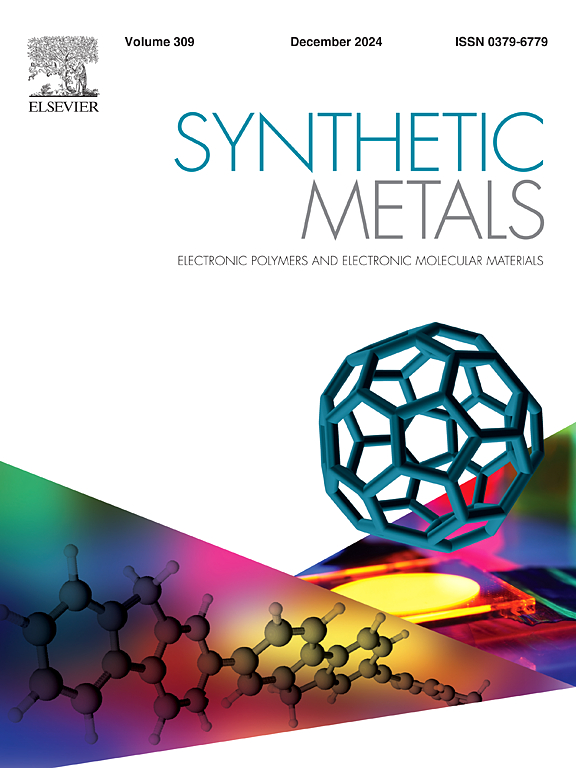提高1,5-萘二胺氧化石墨烯在超级电容器中的电化学储能性能
IF 4
3区 材料科学
Q2 MATERIALS SCIENCE, MULTIDISCIPLINARY
引用次数: 0
摘要
提高用于储能装置的碳基材料的电化学性能通常涉及关键策略,例如通过功能化有意地修改其组成。本研究展示了用1,5-萘二胺(1,5- npda)修饰超级电容器(SCs)的功能化氧化石墨烯(FGO)电极的性能。我们已经在环境友好的条件下使用温和、高效的方法合成了高性能sc的氧化石墨烯和氧化石墨烯结构。通过场发射扫描电镜(FE-SEM)进行形貌研究,记录了具有适当孔隙度的层状结构。此外,能量色散x射线光谱(EDX)、元素映射、x射线衍射(XRD)、傅里叶变换红外光谱(FT-IR)和brunauer - emmet - teller (BET)等表征测试证实了所研究的FGO的结构及其在SC系统中的适用性。制备的FGO具有较高的比电容(Cs),在1 a g−1的1 M LiClO4电解质中,比电容为1125 F g−1。该电极的能量密度为90 Wh kg−1,最高功率密度为8.133 kW kg−1,经过10000次循环后电容保持率为97.2 %。这些碳基电极材料为fgo在储能中的应用提供了有价值的见解和理论基础。这项研究的结果,特别是在能量密度和功率密度方面,为在纳米碳化硅中使用FGO开辟了新的可能性,并增强了人们对解决纳米碳化硅局限性(特别是其低能量密度)的乐观态度。本文章由计算机程序翻译,如有差异,请以英文原文为准。
Enhancing electrochemical energy storage performance of graphene oxide with 1,5-naphthalene diamine in supercapacitors application
Enhancing the electrochemical performance of carbon-based materials for energy storage devices typically involves key strategies, such as intentionally modifying the composition through functionalization. This study demonstrated the performance of functionalized graphene oxide (FGO) electrodes for supercapacitors (SCs) modified using 1,5-naphthalene diamine (1,5-NPDA). We have synthesized GO and FGO structures using a gentle, efficient approach under environmentally friendly conditions for high-performance SCs. Morphological investigation was carried out through field-emission scanning electron microscopy (FE-SEM) images and the layered structure with appropriate porosity was recorded. In addition, characterization tests such as Energy-dispersive X-ray spectroscopy (EDX), elemental mapping, X-ray diffraction (XRD), Fourier transform infrared spectroscopy (FT-IR), and Brunauer–Emmett–Teller (BET) confirmed the studied FGO's structure and its suitability for use in the SC system. The as-prepared FGO has a high specific capacitance (Cs) of 1125 F g−1 at 1 A g−1 in 1 M LiClO4 electrolyte. This electrode provides the energy density of 90 Wh kg−1 at the highest amount of a power density of 8.133 kW kg−1 with a 97.2 % capacitance retention after 10000 cycles. These carbon-based electrode materials offer valuable insights and a theoretical foundation for utilizing FGOs in energy storage. The results of this study, particularly regarding energy density and power density, opened up new possibilities for using FGO in SCs and reinforced optimism about addressing the limitations of SCs, specifically their low energy density.
求助全文
通过发布文献求助,成功后即可免费获取论文全文。
去求助
来源期刊

Synthetic Metals
工程技术-材料科学:综合
CiteScore
8.30
自引率
4.50%
发文量
189
审稿时长
33 days
期刊介绍:
This journal is an international medium for the rapid publication of original research papers, short communications and subject reviews dealing with research on and applications of electronic polymers and electronic molecular materials including novel carbon architectures. These functional materials have the properties of metals, semiconductors or magnets and are distinguishable from elemental and alloy/binary metals, semiconductors and magnets.
 求助内容:
求助内容: 应助结果提醒方式:
应助结果提醒方式:


